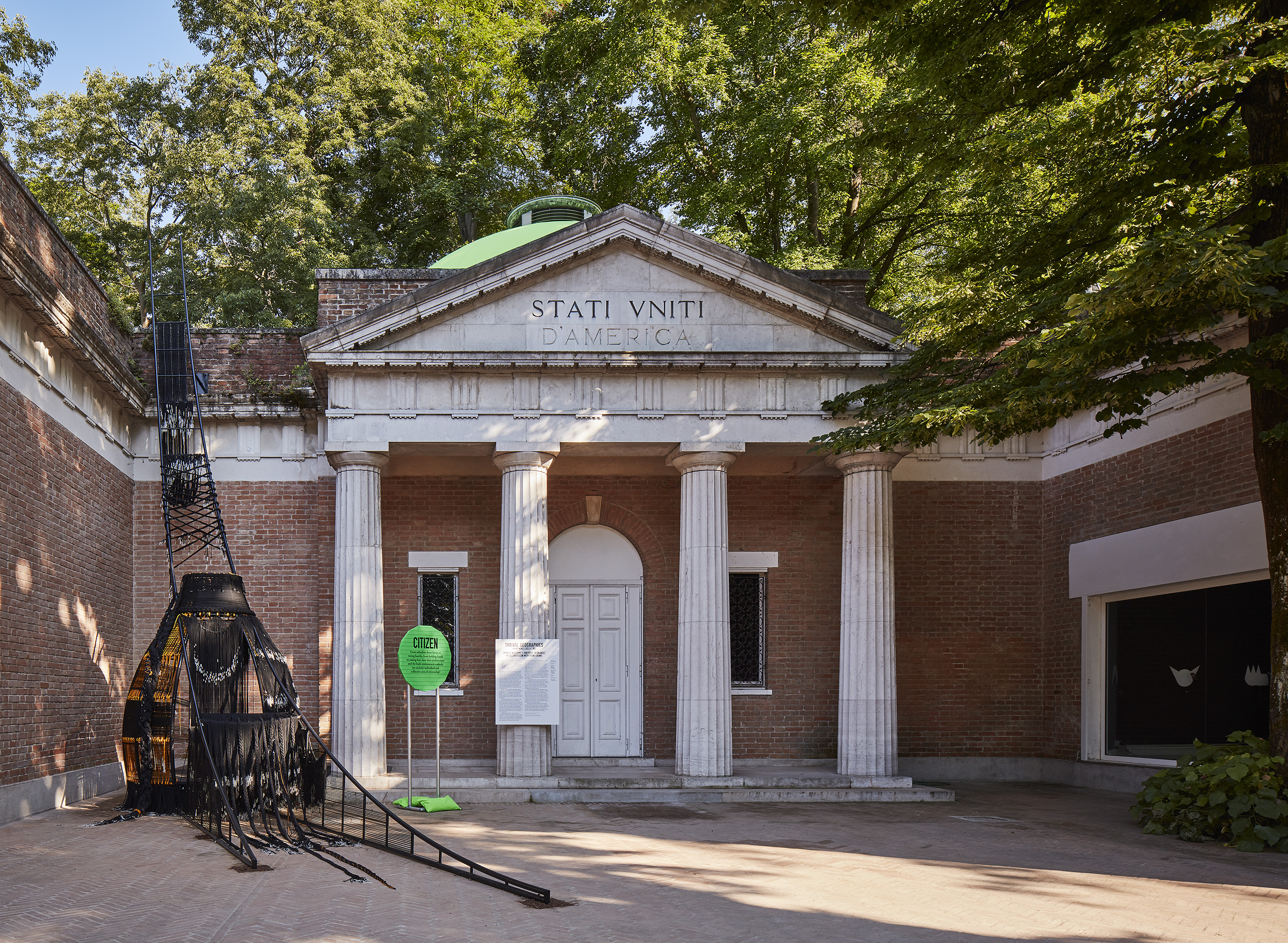[ad_1]
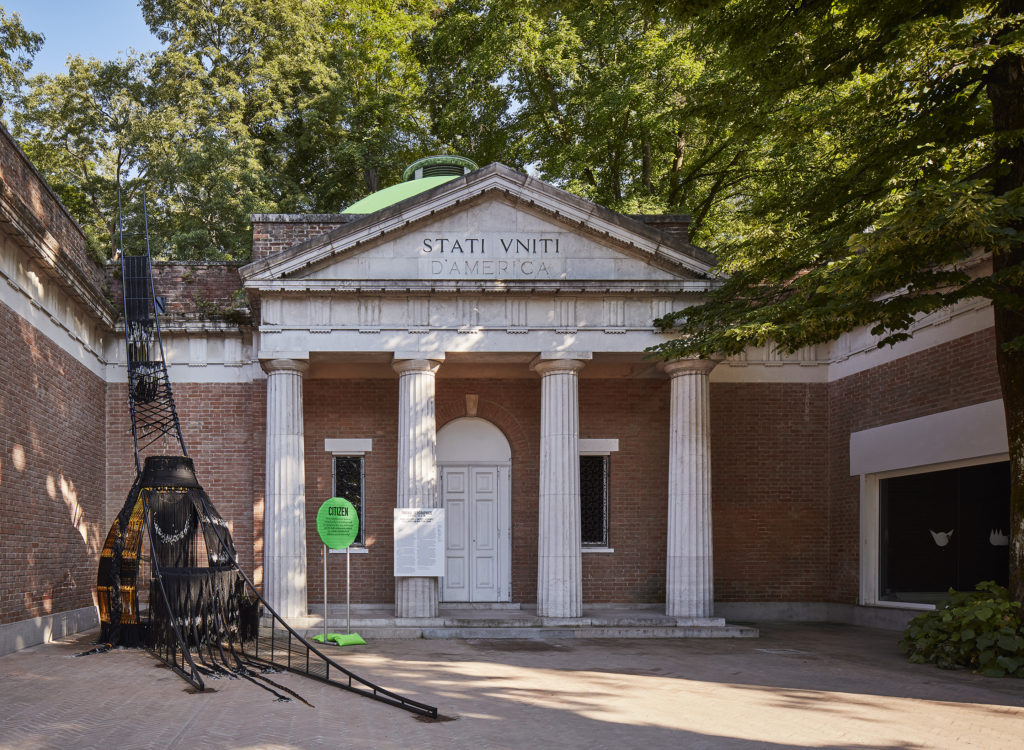
“Thrival Geographies (In My Mind I See a Line)” by Amanda Williams + Andres L. Hernandez, in collaboration with Shani Crowe at the 2018 U.S. Pavilion.
©TOM HARRIS/COURTESY SCHOOL OF THE ART INSTITUTE OF CHICAGO AND UNIVERSITY OF CHICAGO
Sociopolitical anxiety seemed to dominate the American presence at the 16th Venice Architecture Biennale, which opened last week with the charged theme of “free space.”
Influenced by the U.S. government’s increasingly contentious actions on immigration and travel and ongoing discussions about the principles of democracy and freedom, the curators of the U.S. Pavilion—Chicago-based architects Ann Lui, Niall Atkinson, Mimi Zeiger, and Iker Gil—created a show called “Dimensions of Citizenship” as a means of examining how architecture is complicit in systems of exclusion while also having the power to form communities.
“We developed this proposal during a time when urgent questions, both in the U.S. and abroad, were often about citizenship and in many of these conversations, architecture and built environment were at the center of them,” Lui told me, pointing to debates about the display of Confederate monuments and questions of national sovereignty in airports as some of her curatorial inspirations.
The seven works commissioned for the pavilion, she said, “start to talk about this idea of public space and belonging and collectivity, but they also challenge the theme and start to ask about the populations that are excluded or marginalized, for whom there is no free space.”
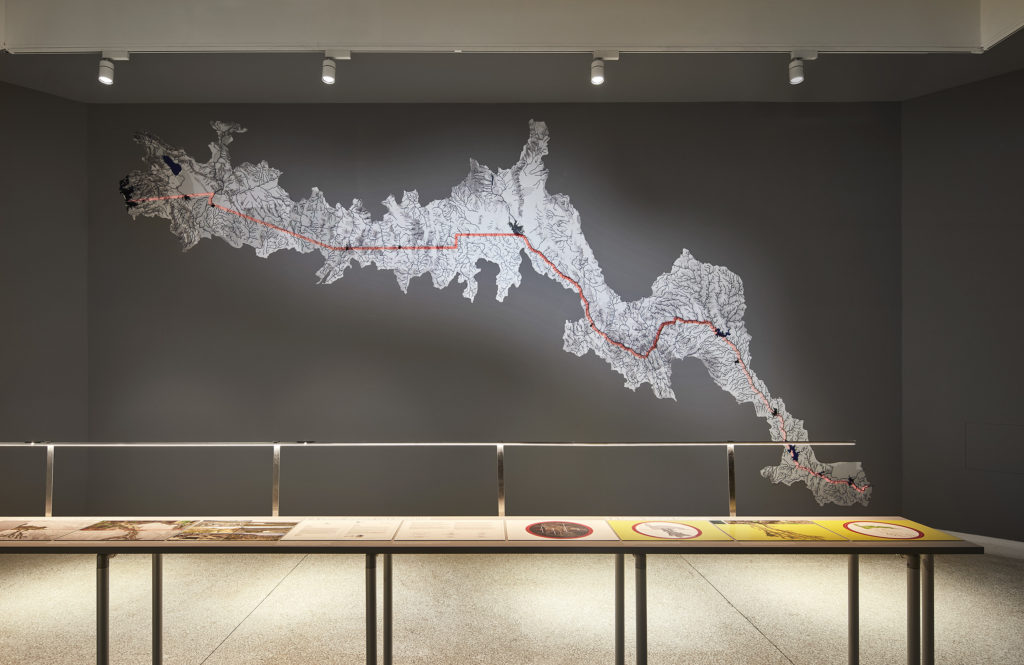
“Mexus: A Geography of Interdependence” by Estudio Teddy Cruz + Fonna Forman at the 2018 U.S. Pavilion.
©TOM HARRIS/COURTESY SCHOOL OF THE ART INSTITUTE OF CHICAGO AND UNIVERSITY OF CHICAGO
To illustrate this double-edged aspect of architecture on a national scale, San Diego firm Estudio Teddy Cruz + Fonna Forman recontextualized the border between Mexico and the U.S. Instead of focusing on the differences on each side, Mexus uncovered the environmental commonalities and ecological goals shared by both. A looming map of the border zone is displayed with survey data collected from citizens of Tijuana and San Diego reflecting their support for a collaborative solution to environmental issues.
Chicago’s Studio Gang, on the other hand, provided audiences with a physical experience of civic history by transporting cobblestones from the Memphis Landing of the Mississippi River to the U.S. Pavilion, for a display called “Stone Stories.” Built by immigrant laborers in the late 1800s and part of a major slave port, the stone-paved landing implicitly asks visitors to consider the future potential of spaces once utilized for abhorrent practices.
Powerhouse New York design studio Diller Scofidio + Renfro, meanwhile, took a global view with “In Plain Sight,” a video presentation that maps illumination patterns across the earth at night to challenge assumptions about representation. Many populous areas are devoid of light, and thus invisible, while some sparsely populated industrial areas radiate it. Viewers are tasked with considering how visibility is unmeshed with economic, political, and environmental issues, and how conditions might be altered to better ensure the representation of all people.
The expansive scale of the exhibition emphasized less one’s individual rights as a citizen of a given country, and more the duty of citizens of the world to provide for it, and for each other.
“Expanding the notion of citizenship of how it can be defined on these scales, from the individual to the cosmos, allowed the designers to have a more positive relationship in helping communities decide how citizenship is an act between people,” Atkinson said.
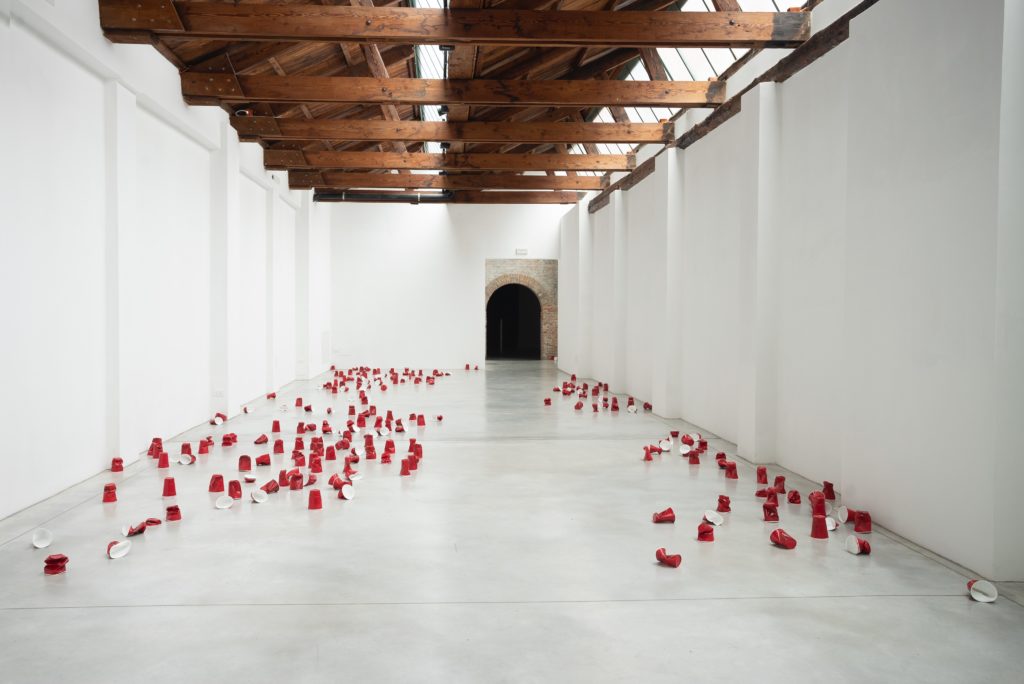
Paula Crown’s “The Architecture of Memory,” a project in collaboration with Dallas Contemporary.
PAHC/STUDIO
The parallel projects by Americans in Venice also have an activist bent. Artist Paula Crown, who partnered with Dallas Contemporary for her new installation at the Biennale, The Architecture of Memory, filled an exhibition space in the Cannaregio neighborhood—which was previously used as the Ukrainian Pavilion during the art biennale—with crumpled Solo cups cast in plaster. The work addresses the mass consequences of citizens’ individual actions—namely, the devastating footprint that American consumerism is leaving as we pollute the planet.
“I’m all for the individual cup and individual personality, but we need to have responsibility and accountability in our world too—that’s what makes a reasonable society,” Crown told me, adding that she sees a role for artists and architects in “doing things that are honoring our democratic values.”
“I want people to look at my art and say ‘huh’ and then ‘wow!’ ” Crown said, riffing on a famous Ed Ruscha line. “And I think that says it all—we want people to be involved . . . who don’t like shiny, bright things, and things that capture our attention? But it’s the staying power [that matters].” Especially important for her is that, when “making work, you don’t want to be didactic.”
This was another key issue explored in the thematic foundation of the U.S. Pavilion: How can activism in architecture avoid devolving into empty moralizing? Where is the line, for artists and architects, between being aware and simply being didactic?
“It’s a process of thinking through things,” Atkinson said, about toeing that line. The curators did not want people to imagine that they could fix global issues using architecture and built environments, “but that architecture has to enter into the robust debate about [them].”
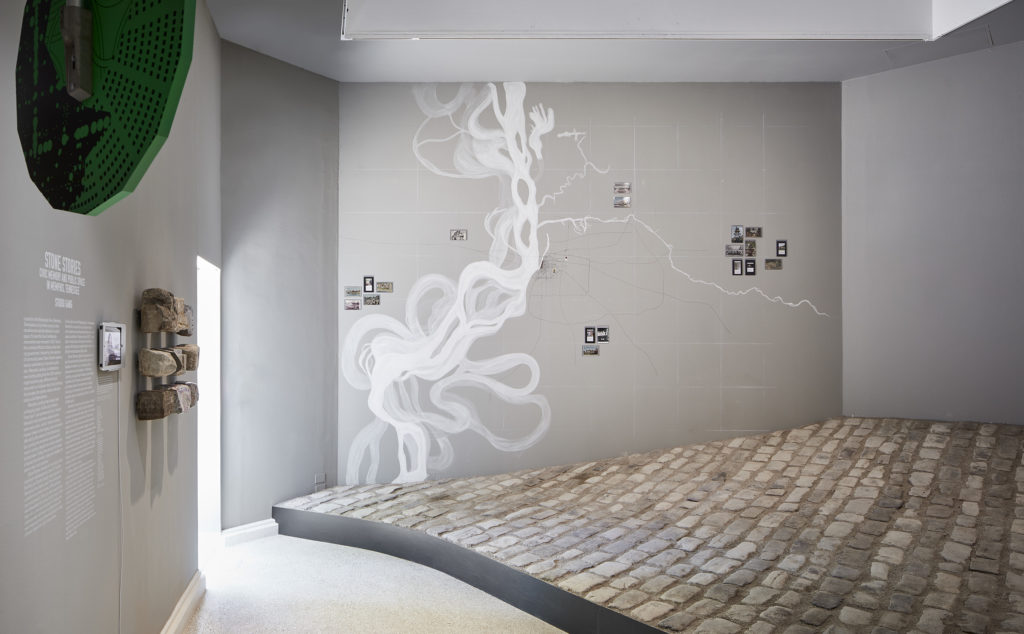
“Stone Stories” by Studio Gang at the 2018 U.S. Pavilion.
©TOM HARRIS/COURTESY SCHOOL OF THE ART INSTITUTE OF CHICAGO AND UNIVERSITY OF CHICAGO
To demonstrate what a more inclusive architecture might look like in a public space, Amanda Williams + Andres L. Hernandez, collaborating with Shani Crowe, installed “Thrival Geographies (In My Mind I See a Line)” in the U.S. Pavilion’s courtyard. Viewers are able to move in and out of a formidable steel and braided cord sculpture that alludes to notions of protection, invisibility, and freedom—its creators have cited Harriet Tubman helping fugitive slaves escape their owners, Harriet Jacobs hiding in a crawlspace for seven years to escape an abusive master and reunite with her children as inspirations.
Any architectural display–like any artwork or book—is, of course, just a starting point for discourse. Works like “Stone Stories” and “Thrival Geographies (In My Mind I See a Line)” are invitations—sobering, haunting ones—to honor too-often-marginalized histories by building of new consensuses and creating substantive change.
“Meanings are produced by your interaction” with the works in the pavilion, Atkinson said, adding that such encounters are central to the “interactive dialogue between the body and architecture that we’re trying to start this year.”
[ad_2]
Source link

